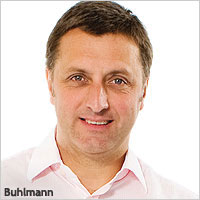
Call it a two-speed advertising world, where “high-gear” emerging markets drive growth in global expenditures for the next five
years, while “low-gear” mature markets make a smaller contribution.
That’s how Aegis Group sees the industry developing during that time, according to company CEO Jerry
Buhlmann. He offered the company’s perspective to analysts and investors at the Numis Securities Media Conference in London earlier this week.
The so-called BRIC countries (Brazil,
Russia, India and China) will account for half of all growth in the global ad economy between 2011 and 2015, according to Buhlmann. North America will remain the world’s largest market during
that time and contribute 19% to the industry’s total growth.
advertisement
advertisement
Another dozen or so faster-growing markets, such as South Korea, Vietnam and Turkey, will account for a combined 10% of
global ad growth, while the currently sluggish Western Europe will add an additional 8%.
Digital will continue to grow by leaps and bounds, Buhlmann told the Numis conference attendees. By
2016, Internet and mobile advertising combined will account for nearly 25% of all media expenditures, up from about 15% today, per Aegis Media estimates.
Buhlmann outlined several key
objectives for Aegis going forward, including increasing its exposure to faster-growing regions and continuing to push the company’s digital capabilities, which accounted for 35% of total
revenues by the end of 2011.
The firm also intends to boost organic growth by broadening its service offerings, while boosting its international and new business profile, Buhlmann said. Its new
business efforts have paid off lately -- the firm has won $6 billion in net new business over the last 18 months, with half of that tied to the global General Motors media assignment win this
year.
The company will continue to make strategic acquisitions that can help achieve its objectives, Buhlmann added. Aegis has spent more than $1.2 billion since 2005 on approximately 85
acquisitions. During that time, the return on invested capital has averaged 14%, he said.